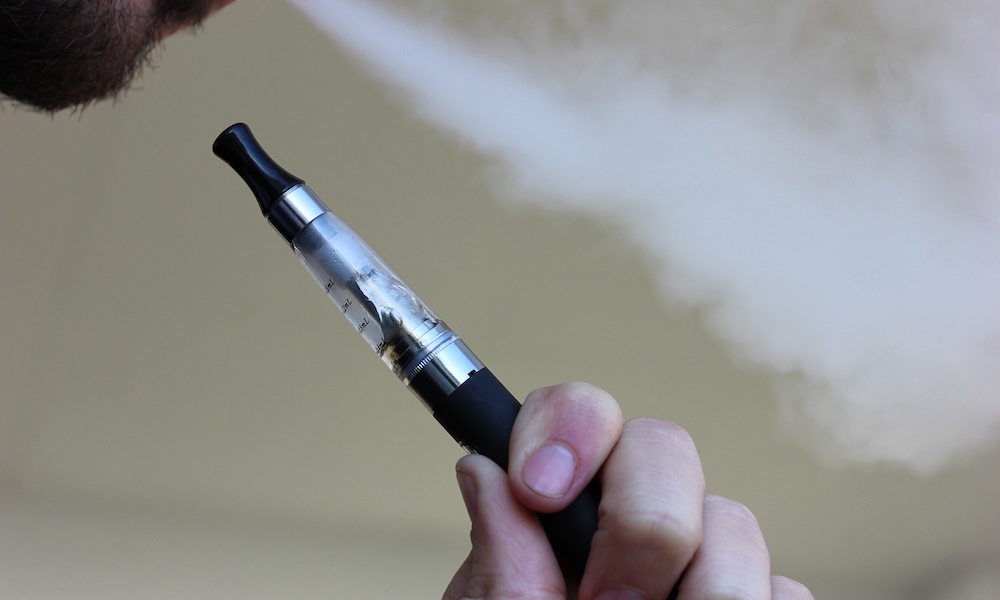
Medical
How Consumers Can Avoid Dangerous Vape Cartridges
Health authorities have named a chemical derived from vitamin E as a potential cause of the serious illness that is now affecting hundreds across the country after vaping either cannabis or tobacco products. The chemical is a legal cannabis additive in many states, so what can you do to protect your lungs?
Hundreds of people across the country have taken ill over the past weeks with a severe pulmonary affliction apparently linked to the vaping of cannabis products and nicotine-filled e-cigarettes. The victims are now said to number over 450 — and many were otherwise healthy young people, in their teens or early 20s. State and federal health authorities are investigating, and have just issued preliminary findings naming a particular additive found in vape cartridges. While the additive appears most common in illicit market vapes, many states have not banned the substance in their legal products.
As of Sept. 10, six deaths have been reported in the wave of mysterious illness: in Kansas, Indiana, California, Minnesota, Illinois and Oregon. The Kansas officials did not state what types of products the victim had been consuming. In the Illinois case, the victim had apparently been using e-cigarettes. In the Oregon case, the Associated Press reported that it appeared the victim bought the cannabis vape from a legal dispensary. In the other three, they were likely using cannabis products from the illicit cannabis market. This has seemingly been confirmed in the California case and the Minnesota case.
The federal Food and Drug Administration on Sept. 6 issued a statement about what it knowns so far. The agency stated that many of the cannabis products it examined contained vitamin E acetate, a substance commonly used in beauty products and safe for topical use, but potentially dangerous when vaped.
“Because consumers cannot be sure whether any THC vaping products may contain vitamin E acetate, consumers are urged to avoid buying vaping products on the street, and to refrain from using THC oil or modifying/adding any substances to products purchased in stores,” the FDA said.
The FDA statement also stressed the tentative nature of the findings: “While the FDA does not have enough data
Avoid Vitamin E Acetate & Other Cutting Agents
Vitamin E acetate — simply the oil form of the vitamin, which is naturally found in foods such as olive oil, canola oil and almonds — is widely available as a nutritional supplement, and is especially used in topical skin treatments. It is not known to cause harm when ingested or vaped.
As the Mayo Clinic notes, vitamin E has antioxidant properties that protect cells against the harmful effects of free radicals. As a nutrient, it’s important to vision, reproduction and the health of your blood, brain and skin.
But, as a Washington Post account states, “its molecular structure could make it hazardous when inhaled.” And it is apparently among the substances being added to cannabis distillate in illicit-market dab carts to help make the extracts form a vapor.
Mitch Zeller, director for the Center for Tobacco Products at the FDA, told the New York Times, “If you’re thinking of purchasing one of these products off the street, out of the back of a car, out of a trunk, in an alley, or if you’re going to then go home and make modifications to the product yourself using something that you purchased from some third party or got from a friend, think twice.”
Jim Makoso, vice president of Lucid Lab Group, a cannabis extraction company based in Seattle, had similar cautions.
“At the moment, we do not know exactly what products and what compounds in those products have led to these extreme cases,” Makoso told Cannabis Now. “In the two cases linked to vape products containing THC, the Minnesota case investigation revealed that the vape product was purchased from the illicit market. In the California case, officials did not specify the origin of the vape product involved. Consequently, definitive information as to what may be the root cause of the recent increase in pulmonary illnesses related to vaping is speculative at best.”
Check the Testing Label for Additives on Legal Cannabis Vaporizers
While most of the people sickened by the use of cannabis vaporizers and e-cigarettes appear to have purchased those items on the illicit market, where counterfeit vapes of legal brands have recently been proliferating, it is still possible that some legal cannabis vapes could contain vitamin E acetate or other dangerous additives.
In Oregon, where the individual appears to have died after vaping a legally purchased product, the state has not banned vitamin E acetate, according to Leafly, which broke the
In California, the state requires products to pass laboratory testing for a wide range of dangerous substances, including pesticides, mold, heavy metals and residual solvents from the extraction process. However, a review of the state’s testing requirements shows that the state has not yet banned vitamin E acetate or other common additives.
In order to avoid additives, look at testing labels in state-licensed dispensaries to make sure the vape you’re buying doesn’t contain anything other than cannabis plant matter.
Make Sure Your Battery Is Functioning Properly
The science is still preliminary on this front, but one 2017 study from Portland State University found that cannabis concentrates heated to above 750 degrees Fahrenheit produced the carcinogen benzene as the terpenes degraded.
In order to protect against overly hot cannabis vapor, it’s best to use vaporizers with properly functioning batteries that don’t heat up to extreme temperatures. Some vapes come with electronic monitors that let you know what temperature the device is operating at, which can give an added peace of mind.
TELL US, do you know what’s in your vaporizer?


























